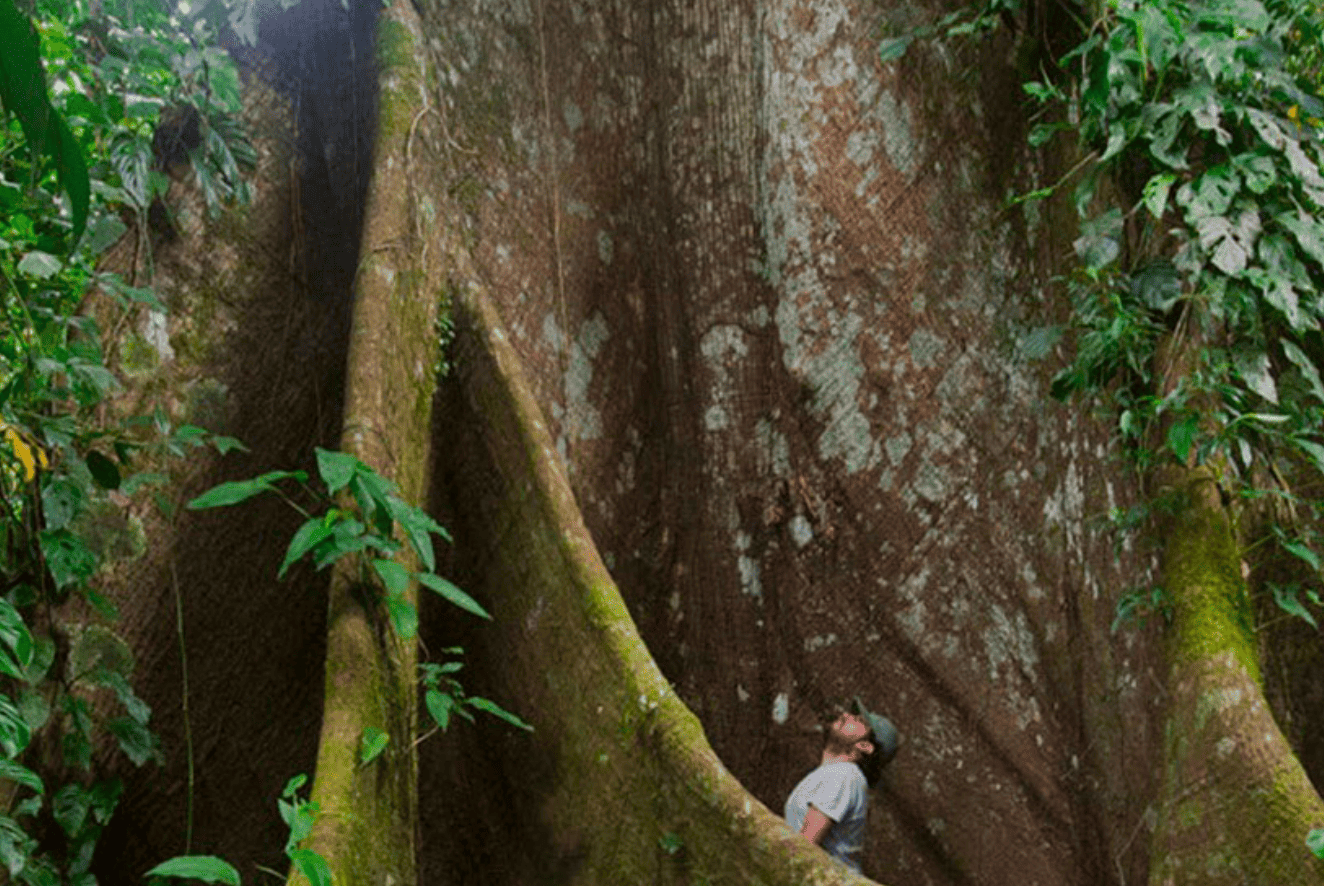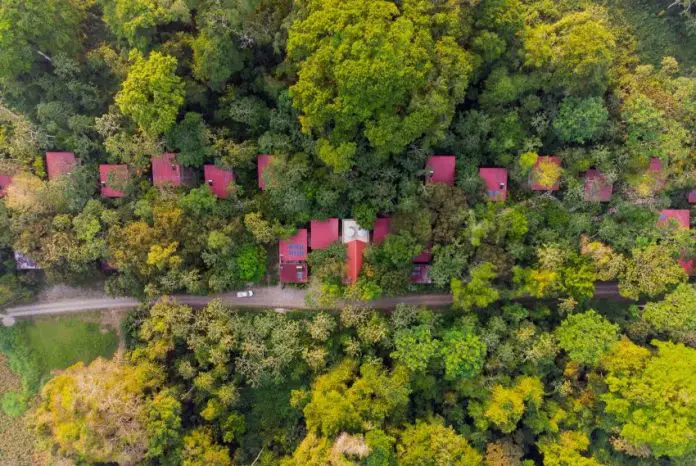Can you imagine waking up to the sound of howler monkeys and exotic birds in the middle of the jungle, with all the comforts of home, while helping to preserve the ecosystem? In the most biodiverse part of Mexico, considered one of the 25 biological hotspots on the planet, you can do just that, thanks to a sustainable tourism conservation project called “Canto de la Selva.”
The tropical jungle in question is the Lacandon Rainforest in Chiapas, and we’ve discussed its outstanding natural beauty before. It is home to 600 species of trees, including Spanish cedar, mahogany and rosewood. Located next to the Montes Azules Biosphere, this 1,500-hectare tropical forest is one of the last surviving remnants of the tropical jungle in Mexico, thanks to the conservation efforts of its inhabitants, the Indigenous Lacandon people, who have preserved this amazing place for centuries.

A story of conservation
In the 1970s, most of Mexico’s tropical jungles were destroyed and converted into agricultural fields; fortunately, places like the Lacandon Rainforest and the Montes Azules Biosphere Reserve survived, though to this day both remain under threat of deforestation. That is why in 2009 a group of residents of the community of Galacia decided to set aside 1,500 hectares to preserve their jungle and focus on ecotourism, with the advice and support of environmental organizations such as Natura and Ecosistemas Mexicanos.
To give you an idea of the pivotal importance of this paradise, the Lacandon Jungle is the most extensive rainforest in the Americas and is included in UNESCO’s World Network of Biosphere Reserves. The Lacandon Rainforest is home to 3,400 species of plants, 625 species of butterflies, 345 species of birds and 84 species of reptiles, many of which are endemic (not found anywhere else in the world) or endangered.
Fortunately for the people living near Canto de la Selva, ecotourism is a great option to diversify their productive activities and improve their income without destroying the natural wealth of the forest. In fact, no trees had to be cut down to build this charming hotel with its 14 cabins and terrace overlooking the Lacantún River. “We took advantage of a disused agricultural area that has now been rehabilitated, and the local vegetation is our garden,” says the community on its website.
As you can see, a visit to Canto de la Selva is a perfect way to preserve one of the world’s most special ecosystems and enjoy activities that will leave you with unforgettable memories.

Activities to awaken your senses
“Canto de la Selva” is not only comfort in the middle of the jungle, which is a dream in itself, but also a direct connection with its history. The owners and managers have deep roots in the Lacandon Rainforest, with family ties stretching back for centuries. As you can imagine, this means that they know the secrets of this magical place like few people in the world.
If you want to see the giants of the jungle, you can pass through tree corridors lined with enormous ficus cedars or climb “Las Dos Torres,” a place where you can contemplate the immensity of the jungle from the heights. The guides of this hotel also offer a nocturnal walk to listen to the orchestral sound of the jungle in the dark. It is also possible to kayak the Lacantún River, one of the last clean and biodiverse rivers in the country.
The lodge offers bird watching, monkey watching, mountain biking, hot springs, suspension bridges, zip lines and more. “The jungle enchants, the jungle heals, the jungle educates, the jungle transforms,” says Omar Vidal, a passionate scientist and former director of the World Wildlife Fund-Mexico, who previously wrote about the magic of the Lacandon Rainforest for this publication.
More information is available on the Canto de la Selva website.
Ana Paula de la Torre is a Mexican journalist and collaborator of various media such as Milenio, Animal Político, Vice, Newsweek en Español, Televisa and Mexico News Daily.
